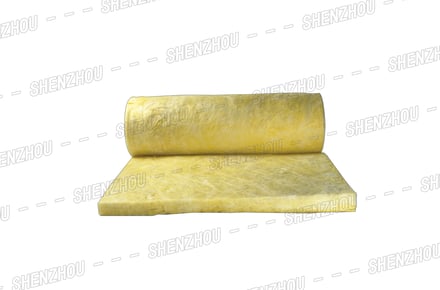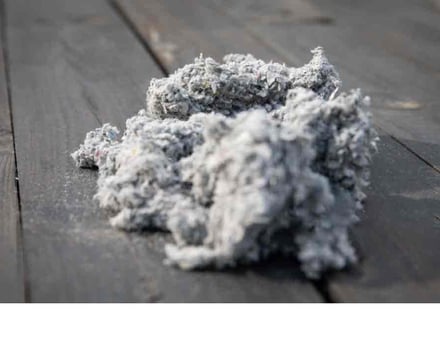Insulation Wars: Cellulose vs Fiberglass Insulation
Shenzhou CO.LTD
12/8/20236 min read


Comparison Between Cellulose Insulation And Fiberglass Insulation
Facing a decision between the two and unsure about what's best for your home? Explore our in-depth guide for a detailed analysis and find the solution that suits your needs.
“So which is better, fiberglass or cellulose?”
This question is a frequent inquiry! Shenzhou provide you with a definitive answer, we have compiled all the essential information in one comprehensive resource.
At the beginning of the 20th century, the construction field began to study methods to improve insulation performance, which promoted the development of Cellulose insulation. The use of waste paper and other cellulosic materials as insulation became the first choice and subsequently underwent continuous refinement of the formulation, including the introduction of flame retardants to improve fire resistance. In the 1970s, as environmental awareness increased, Cellulose insulation gradually gained market recognition as a sustainable and effective insulation option. In recent years, technological innovations in the production of this material, such as the introduction of spray and wet spray processes, have improved installation efficiency and performance.
At the same time, the discovery of fiberglass in the early 20th century promoted the rise of Fiberglass insulation. It was not until the mid-20th century, especially in the 1930s, that fiberglass began to be widely used in the manufacture of insulation materials, and glass wool became the mainstream choice. Technology continues to improve, making fiberglass insulation increasingly lighter, softer, and easier to install. In recent years, concerns about sustainable construction and environmental protection have driven further improvements in fiberglass insulation technology to reduce adverse environmental impacts. In summary, both Cellulose insulation and Fiberglass insulation have experienced development and continuous innovation, and have become highly efficient insulation materials widely used in the construction industry.
Development path
Fiberglass VS Cellulose
10 Advantages of Fiberglass Insulation
Superior Insulation Performance
Low Thermal Conductivity
Lightweight and Portable
Non-Absorbent
Mold and Decay Resistance
Resistant to Pests
High-Temperature Resistance
Ease of Customization and Installation
Environmentally Friendly Material
Durability
10 Advantages of Cellulose
VS
Energy Efficiency
Eco-Friendly Choice
Cost-Effective
Sound Absorption
Versatile Applications
Fire Retardant
Moisture Control
DIY-Friendly
Health and Safety
Long Lifespan
Introduce
Fiberglass and Cellulose insulation material are two materials commonly used for building insulation.
Fiberglass insulation is an insulation material with fiberglass as the main component. Its thermal insulation effectiveness is mainly reflected in its excellent thermal resistance performance. By blocking heat transfer, fiberglass insulation effectively creates a barrier that helps maintain a comfortable indoor temperature. The material's lightweight nature makes it easier to handle during installation, while its cost-effectiveness also makes it a top choice for consumers on a budget.
Cellulose insulation is mainly made from recycled pulp and is a cellulose-based insulation material. Similar to fiberglass insulation, cellulose insulation provides effective thermal insulation through its excellent thermal resistance properties. Due to its environmentally friendly properties, cellulose insulation is often viewed as a more sustainable option. The material can adapt to a variety of spaces, providing flexibility to building projects.
Longrvity
Fiberglass and cellulose insulation materials differ in terms of longevity, and several factors contribute to their respective lifespans.
Fiberglass Insulation:
Fiberglass insulation is known for its durability and long lifespan when properly installed and maintained. Fiberglass itself is resistant to moisture, mold, and pests, which can contribute to its longevity. Additionally, fiberglass does not settle or compact over time, helping it to maintain its thermal performance over the years. Proper installation, without gaps or compression, is crucial for ensuring the longevity of fiberglass insulation.
Cellulose Insulation:
Cellulose insulation also has a good lifespan, but its longevity may be influenced by environmental factors. While cellulose insulation is treated to be fire-retardant, it may be more susceptible to moisture-related issues compared to fiberglass. If not adequately protected from moisture, cellulose insulation can be prone to mold growth and deterioration. However, proper installation and moisture control measures can significantly extend its lifespan.
Environmental Factors:
The longevity of both insulation materials is influenced by the environment in which they are installed. Exposure to high levels of humidity, leaks, or flooding can impact the performance and longevity of insulation. In regions prone to moisture-related issues, proper ventilation and moisture control become crucial for preserving the lifespan of both fiberglass and cellulose insulation.
Maintenance:
Regular maintenance and inspections are essential for maximizing the longevity of insulation materials. Any damage, compression, or signs of moisture intrusion should be addressed promptly to prevent a decrease in insulation effectiveness.
In summary, both fiberglass and cellulose insulation materials can have a long lifespan when installed correctly and maintained appropriately. The key factors influencing longevity include proper installation techniques, environmental conditions, and effective moisture control. Homeowners and builders should consider these factors and follow recommended installation and maintenance practices to ensure the optimal performance and longevity of the chosen insulation material.
Safety
The safety considerations of fiberglass and cellulose insulation materials encompass various factors, including health impacts during installation, fire safety, and resistance to pests. Here's a discussion on the safety aspects of both materials:
Fiberglass Insulation:
Respiratory Safety: Fiberglass insulation can pose a risk to respiratory health during installation. Fine glass fibers may become airborne, and inhaling them can irritate the respiratory system. Installers are typically advised to wear protective gear, such as masks and gloves, to minimize exposure.
Fire Safety: Fiberglass is naturally non-combustible and is often treated to be fire-resistant. This enhances the overall fire safety of fiberglass insulation, making it a suitable choice for minimizing fire risks in buildings.
Pest Resistance: Fiberglass insulation is resistant to pests and does not provide a food source for insects or rodents. This contributes to a safer and healthier indoor environment by preventing pest-related issues.
Cellulose Insulation:
Respiratory Safety: Cellulose insulation is generally considered safe for respiratory health. However, during installation, installers should take precautions such as wearing masks to minimize exposure to dust. Cellulose insulation is often treated with non-toxic substances to enhance fire resistance and inhibit pests.
Fire Safety: Treated cellulose insulation has fire-retardant properties, enhancing safety in case of a fire. The treatment typically involves the addition of chemicals such as borates, which are effective in reducing the flammability of the material.
Pest Resistance: Cellulose insulation, when treated with borates or other pest-resistant agents, can deter insects and rodents. This treatment contributes to the prevention of pest-related issues, ensuring a safer indoor environment.

Consider budget and cost-effectiveness:
Fiberglass insulation is often a relatively economical option for consumers with budget constraints. Its initial cost is relatively low and it can achieve considerable cost-effectiveness in terms of insulation effect. Fiberglass may be an attractive option for consumers who need a quick, cost-effective insulation solution.The cost of Cellulose insulation is also relatively reasonable, especially considering its environmental friendliness. Although the initial cost may be slightly higher, its improvements in energy efficiency may result in long-term savings on energy bills, making it cost-effective in the long run.
Environmental protection and sustainability considerations:
Although fiberglass insulation is relatively better in terms of environmental protection because fiberglass is a recyclable material, its production process may involve some energy-intensive steps. If environmental protection is important to consumers, they may be more inclined to choose other, more sustainable materials.Cellulose insulation is made from recycled pulp and uses waste paper and cardboard, so it is more environmentally friendly. For consumers who value sustainability and recycling, cellulose may be more in line with their values.
When choosing insulation materials, consumers should also consider other factors such as insulation performance, health and safety, suitability, etc. Overall, by weighing these factors, consumers can better address their individual needs and preferences to ensure they choose the insulation that best suits their living situation and budget.
How to choose Fiberglass or Cellulose
Where can I get high quality foam sheet insulation?
We have focused on the research of thermal insulation materials for forty years and have obtained many international certifications. We are mainly engaged in glass wool, thermal insulation rubber and plastic, rock wool and other products. Choose us to give you a satisfactory experience
















About Us
Click the button below to get more information about us
Newsletter
Click to subscribe for more information
Follow Us
Contact Us
Address
Dacheng town, Langfang City, Hebei province, China
Phone
+86 185 03165 626




